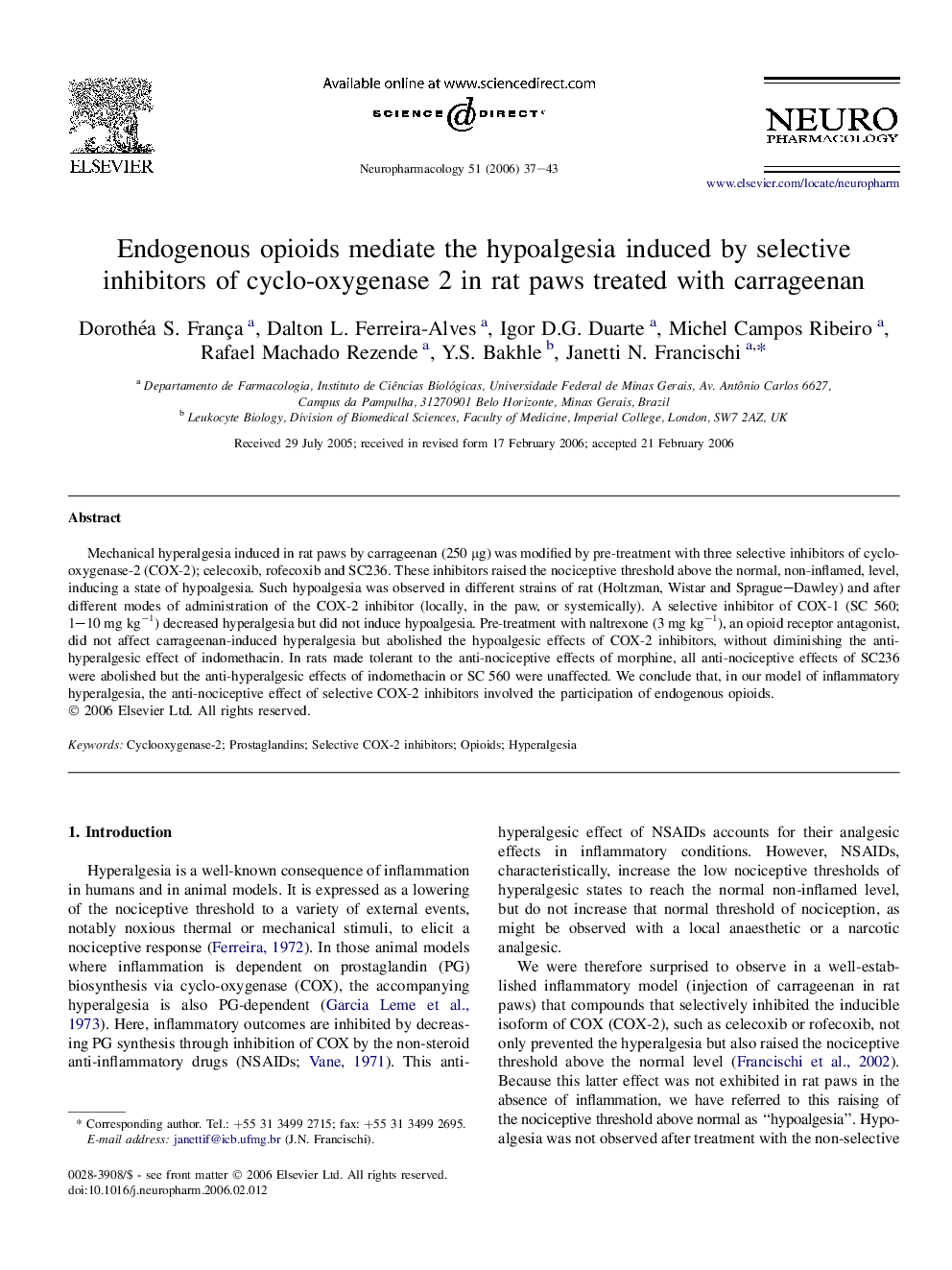| کد مقاله | کد نشریه | سال انتشار | مقاله انگلیسی | نسخه تمام متن |
|---|---|---|---|---|
| 2495381 | 1115616 | 2006 | 7 صفحه PDF | دانلود رایگان |

Mechanical hyperalgesia induced in rat paws by carrageenan (250 μg) was modified by pre-treatment with three selective inhibitors of cyclo-oxygenase-2 (COX-2); celecoxib, rofecoxib and SC236. These inhibitors raised the nociceptive threshold above the normal, non-inflamed, level, inducing a state of hypoalgesia. Such hypoalgesia was observed in different strains of rat (Holtzman, Wistar and Sprague–Dawley) and after different modes of administration of the COX-2 inhibitor (locally, in the paw, or systemically). A selective inhibitor of COX-1 (SC 560; 1–10 mg kg−1) decreased hyperalgesia but did not induce hypoalgesia. Pre-treatment with naltrexone (3 mg kg−1), an opioid receptor antagonist, did not affect carrageenan-induced hyperalgesia but abolished the hypoalgesic effects of COX-2 inhibitors, without diminishing the anti-hyperalgesic effect of indomethacin. In rats made tolerant to the anti-nociceptive effects of morphine, all anti-nociceptive effects of SC236 were abolished but the anti-hyperalgesic effects of indomethacin or SC 560 were unaffected. We conclude that, in our model of inflammatory hyperalgesia, the anti-nociceptive effect of selective COX-2 inhibitors involved the participation of endogenous opioids.
Journal: Neuropharmacology - Volume 51, Issue 1, July 2006, Pages 37–43